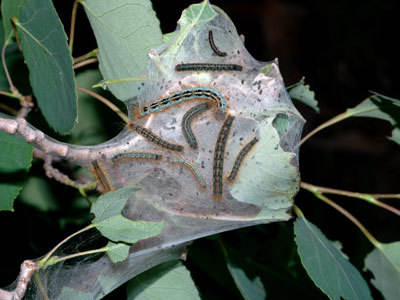Alamosa Field Office – Insects & Diseases
Insects have always been a natural part of the forest but we are experiencing outbreaks on a larger scale in recent years due to drought and other forest health issues.
Insects in the San Luis Valley
Drought stress on trees in the mountains around the San Luis Valley (SLV) is the primary factor making them more susceptible to bark beetles. Other factors that stress trees are overly dense stands, construction disturbance and even overwatering.
Bark Beetles
In the summer (late May – August), bark beetles fly and seek out live green trees to bore into. They overwinter in these trees; their eggs develop into beetles and emerge the following summer, and the process begins again. These trees are called ‘Brood Trees.’
Piñon ips beetle (Ips confuses) is rare in the San Luis Valley. Ips is a common group of bark beetles that infests pine and spruce trees with piñon pine most commonly affected.
Mountain Pine Beetle
- Bark beetle that attacks pines including: lodgepole, ponderosa and bristlecone.
- Small pockets in Conejos Canyon, South Fork and Bonanza
- Attracted to stressed trees and prefer large old trees
- Control: Maintain healthy stands or use Verbonone- an anti-aggregation pheromone that “repels” the beetles, chemical treatment
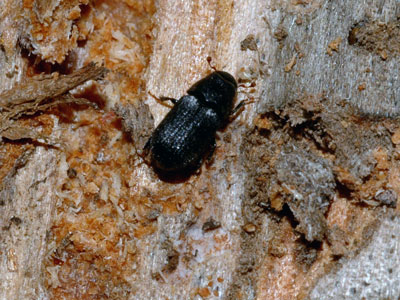
Douglas-fir Beetle
- Bark beetle that only attacks Douglas-fir
- Attracted to stressed trees and prefer large old trees in dense stands
- Numerous new small pockets are showing up in the mountains around the SLV
- Control: Maintain healthy stands or use MCH, an anti-aggregation pheromone that “repels” the beetles
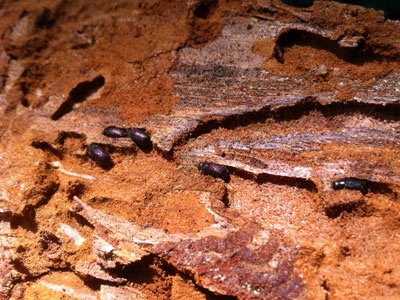
Spruce Beetle
- Bark beetle that only attacks spruce trees with a preference for Engelmann spruce
- Attracted to stressed trees and prefer large old trees in dense stands
- Affecting most stands of spruce in the SLV with almost 100% mortality
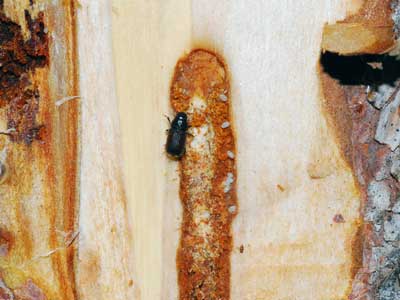
Fir Engraver Beetle
- Bark beetle that only attacks subalpine and white fir, which is most affected in the SLV
- Small pockets occur sporadically throughout the mountains
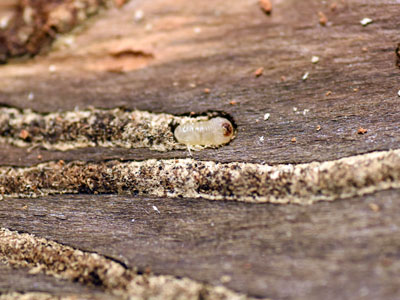
Other
Dwarf Mistletoe
- Affects all ages & sizes of ponderosa and lodgepole pines, as well as Douglas fir and piñon pine to a lesser degree. Mostly found on ponderosa pine in the SLV
- Parasitic plant that robs tree of nutrients & water, which causes growth reduction, poor tree form, loss of wood quality and subsequently premature death
- Control: Prune mistletoe infected branches and/or remove infected trees

Western Spruce Budworm
- Douglas fir & true firs preferred, but will attack spruce
- Larvae feed on current year’s foliage
- 4-5 years of continuous defoliation can result in tree mortality and significant top kill
- Major SLV occurrences are the Sangre de Cristo’s, including La Veta pass area and Conejos Canyon
- Control: Spray pesticide on small scale and maintain a healthy diverse forest
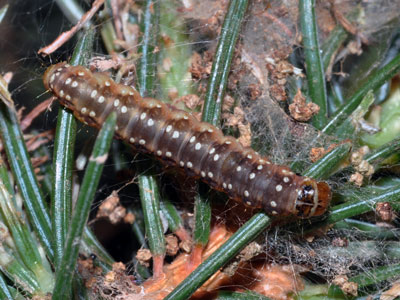
Western Tent Caterpillar
- Affects deciduous broad leaf trees. In the mountains it most commonly affects aspen, but in urban settings has affected cherry and apple
- A defoliated tree will put out a second set of leaves and survive
- Multiple years of defoliation to a tree already stressed by other factors such as drought, overcrowding or another disease may kill a tree
